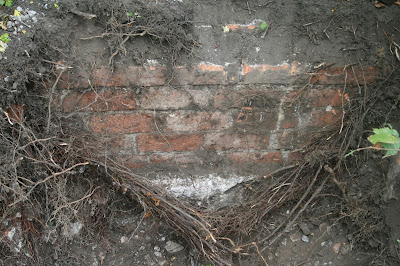Digging for victory
Building work on the Together Trust site is ongoing as the charity extends its Inscape service in Cheadle. Amongst the diggers and the builders, as the final bits of work are completed, history occasionally comes to light.
 |
| Foundation walls of the Sanatorium |
 |
| Sanatorium shortly before its was knocked down in the 1960s |
The Sanatorium was originally erected and equipped 'in memory of John Dewhurst Milne' (of Kendal Milne fame) who had lived and died at Belmont House. It was officially opened on the 28th May by Sir Alfred Hopkinson and had cost over £6000 to build. This was often the first building experienced by those who came to live at Belmont;
“You were quarantined I think for three weeks before you could go into your home because they didn’t want you to take anything peculiar in and spread it round all the children that were there.”
- Shaw Home Resident, 1939-1941
 |
| Plan of the Sanatorium, 1937 |
As well as looking after the children with minor ailments, the building also had an operating room and two isolation rooms for infectious disease. Dental checks were carried out within the building, allowing for most medical issues to be dealt with on the estate. For more serious complaints the children were transferred to the local hospital.
By 1954 the use of the Sanatorium as a hospital was no longer required and the building was converted into a Toddlers Group Home followed by a family group home in 1957 called Sandon House. The branch was closed down in 1963 and the building was knocked down shortly after.
The foundations however, as seen yesterday, still remain as a reminder of how we used to be.
By 1954 the use of the Sanatorium as a hospital was no longer required and the building was converted into a Toddlers Group Home followed by a family group home in 1957 called Sandon House. The branch was closed down in 1963 and the building was knocked down shortly after.
The foundations however, as seen yesterday, still remain as a reminder of how we used to be.

Comments
Post a Comment
Like to know more about a certain home or period in the Together Trust's history? Why not comment and let us know.
If you have a personal or more specific enquiry please see our 'Contact Us' section at the top of this page to get in touch via email.